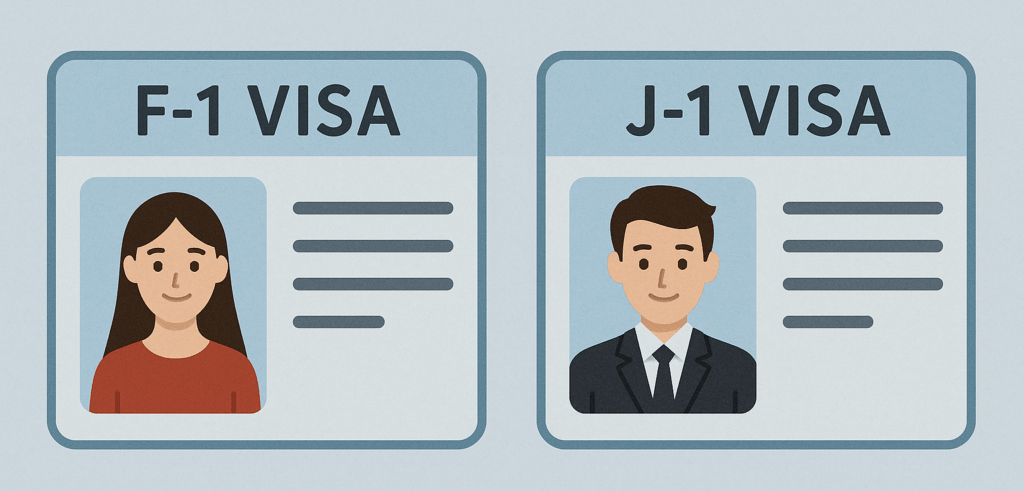A Complete Guide for Parents of Early Study Abroad Students
One of the most important steps in preparing for early study abroad in the U.S. is applying for the F-1 student visa. This visa is required for all international students attending U.S. schools full-time, including minors studying in middle or high school.
In this guide, we’ll walk you through the entire visa process, from receiving the I-20 form to the visa interview. Whether your child is entering 6th grade or 10th grade, understanding each step is essential for a smooth and successful start to their U.S. academic journey.
Table of Contents

What Is an F-1 Visa?
The F-1 visa is a non-immigrant student visa that allows foreign nationals to study at U.S.-accredited institutions, including private schools, colleges, and language programs.
Minor students (under 18) must follow the same legal steps as adult applicants, including completing forms, paying fees, and attending a visa interview.
Step 1: Receive an I-20 Form from the School
Your child must first be accepted by a SEVP-certified school (part of the U.S. Department of Homeland Security’s Student and Exchange Visitor Program).
Once admitted, the school will issue Form I-20, which includes:
- SEVIS ID number
- Program start and end dates
- Estimated tuition and living expenses
This form is required to book a visa interview and pay the SEVIS fee.
Step 2: Pay the SEVIS I-901 Fee
The SEVIS I-901 fee must be paid before submitting the visa application. As of 2025, the fee is $350.
- Pay online at www.fmjfee.com
- Print and keep the receipt—you must bring it to the visa interview
This non-refundable fee registers your child in the U.S. student tracking system.
Step 3: Complete the DS-160 Visa Application
The DS-160 is the online application form required for all U.S. visa applicants.
- Complete it at ceac.state.gov
- Upload a passport-style photo
- Print the confirmation page with the bar code
Parents may complete the form on behalf of their child, but the answers must reflect the child’s information.
Step 4: Schedule a Visa Interview
After submitting the DS-160 form, you will need to schedule an interview at the nearest U.S. Embassy or Consulate. Interview slots can fill up quickly – especially between May and August – so book early.
You will need these documents to schedule:
- DS-160 confirmation page
- SEVIS I-901 fee receipt
- Valid passport (must be valid for at least six months beyond the intended stay)
- Form I-20 issued by the school
Step 5: Prepare for the Visa Interview
Bring the following documents to the interview:
- Valid passport
- Form I-20 (signed by both the school and student)
- SEVIS fee receipt
- DS-160 confirmation page
- One passport-sized photo that meets U.S. specifications
- Proof of financial support (such as bank statements or a sponsor letter)
- Birth certificate or legal guardianship documents (if applicable)
- Optional: a letter from the parent explaining the student’s situation
Providing clear and complete financial documentation is especially important to demonstrate the family’s ability to support the student during their stay.
Step 6: Attend the Visa Interview (With or Without the Child)
Most minor students are required to attend the interview in person, though some embassies may waive this requirement for applicants under age 14. If the student must attend:
- They should be able to introduce themselves in English and explain their motivation to study in the U.S.
- A parent may accompany younger children if permitted by the consulate
- Practicing basic interview questions in English can help the student feel more confident
Step 7: Wait for Visa Approval
Visa processing usually takes a few days to a few weeks, depending on the location and season. Once approved, the F-1 visa will be stamped in the child’s passport. Students may enter the U.S. up to 30 days before the program start date listed on the I-20. Keep in mind that the final decision to allow entry is made by a Customs and Border Protection (CBP) officer at the U.S. airport.
Special Considerations for Minors
- Host family or guardian information may be requested during the interview
- Notarized custody or guardian authorization letters may be required if the child is not traveling with a parent
- Minor students must attend school full-time and follow all school rules to maintain valid visa status
- Holding a visa does not guarantee entry; entry is granted at the discretion of airport immigration officers
Final Checklist for Parents
- I-20 form received and signed
- SEVIS I-901 fee paid
- DS-160 form completed and confirmed
- Interview scheduled
- All required documents gathered
- Student has practiced basic interview answers
- Housing or guardian arrangements are secured
Need Help?
The U.S. visa process for minor students can be complex, especially for first-time applicants. Our team is here to support families through every step—from selecting schools to preparing documentation and interviews. If you have any questions or concerns, contact us for personalized visa consulting and assistance.



